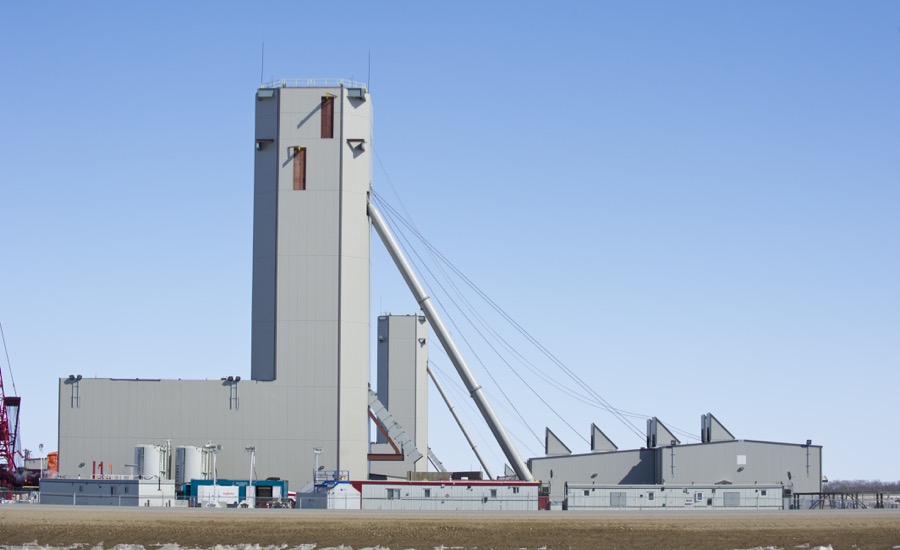
Activist investor Elliott has attacked BHP’s (ASX, NYSE:BHP) plans to speed up the development of a giant potash mine in Canada, warning it could be as “disastrous” as the firm’s bet for US shale.
New York-based Elliott, which has been pushing for an overhaul to BHP’s business strategy and board, slammed the miner’s recently disclosed idea of making its potash division as big as its iron ore unit.
The hedge fund manager said entering the currently over-supplied fertilizer market could be a “severe strategic misstep.”
BHP has already committed $3.8bn to develop Jansen potash project, but the board needs to approve another $4.7bn to bring the mine into production.
“This sounds alarmingly familiar and comes as the company proclaims the dubious strategy of ‘Thinking Big’ — a concept that has been disastrous for BHP shareholders,” an Elliott spokesman said, according to The Australian.
Although BHP board has yet to decide whether to build a mine at the Jansen project, the company has been paving the way for it. So far, BHP has committed a total investment of $3.8 billion for the potash project. From that total, $2.6 billion have been set aside for ongoing surface construction and the sinking of shafts, though the board needs to approve another $4.7 billion to bring the mine into production.
Chief Executive Andrew Mackenzie said in May the company was looking at a phased expansion of Jansen, which is projected to produce 8 million tonnes of potash a year or nearly 15% of the world’s total.
He added the company could seek approval from the board for such expansion as early as June 2018, with production beginning in 2023.
BHP claims investing in potash is thinking ahead, and it has repeatedly stated it believes rising demand for fertilizer in growing nations, particularly China and India, will lead to a long-term price increase for the commodity.
“The basic rationale for rising potash consumption is quite simple,” wrote this week BHP’s potash specialist Paul Burnside. “Not only is the total population continuing to grow, but at least three billion people are expected to join the global middle class by 2030.”
Experts seem to back Elliott position. Sydney-based Deutsche Bank AG analyst Paul Young told Bloomberg Monday that BHP’s bet on potash was a “highly contentious topic and project.” He noted the market continues to be severely challenged, adding it may not improve for at least five years, as there is plenty of spare capacity in the industry.
Earlier this month, Bernstein analyst Paul Gait told FT.com that any wide-ranging portfolio review should conclude that BHP needs to divest its oil unit and walk away from Jansen.
“[The exit from the potash project] would be done via a trade sale to any of the incumbent potash producers whose existing mining and commercial operations allow synergies, which mean that Jansen would be worth more in their hands than in BHP’s,” Gait said.
According to Deutsche Bank analysts, moving the project into full production would require a total capital expenditure of $12.8 billion, making of potash BHP’s fifth key pillar of growth, alongside coal, copper, iron ore and oil.
4 Comments
Mark
Good riddance BHP, take your $$$, buy shares in Potashcorp and Mosaic, and be done with it. Jansen is an uneconomic disaster.
Boomandbust
I remember when the “smart” money types were denigrating Escondida. The development of greenfields has always been BHP’s best route to success – not acquisitions like shale operator PetroHawk.
Art Easian
BHP is counting on the constant, if erratic, need for fertilizer. Agribusiness cannot keep pace without it; less land means the need for higher yields. They also plan to sidestep the cartel and undersell their competetition. Go big or go home. It’s a big strategy for a big Company.
RDC1378
BHP’s list of projects where billions were dissolved for no return can add another one. Review, hot briqueted iron, titanium sands and zimbabwe platinum, all multi billion dollar fiascos. The company was trying to grow at 10% per year at that time, which would make them the sole owner of all the assets on earth by now, had it been more than some throw away credo.